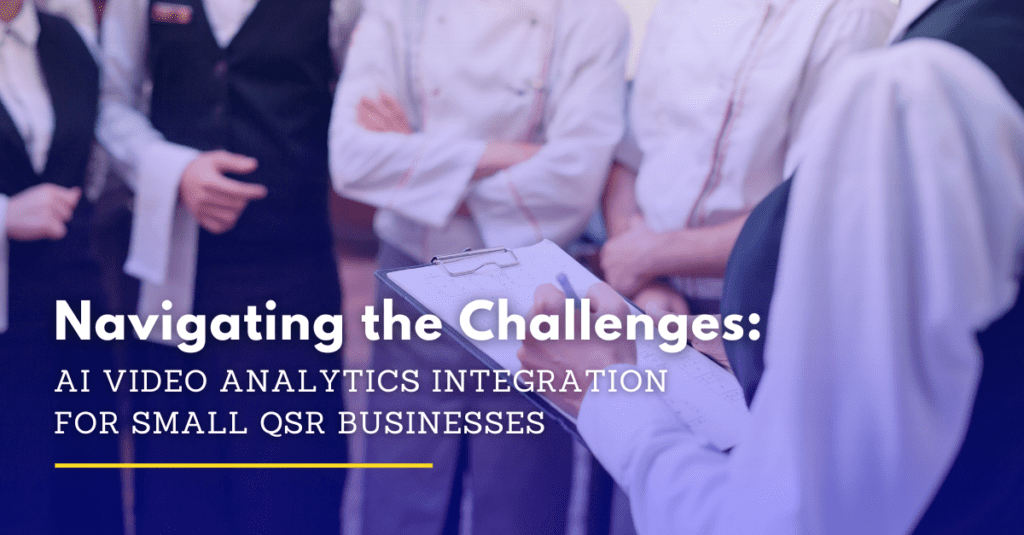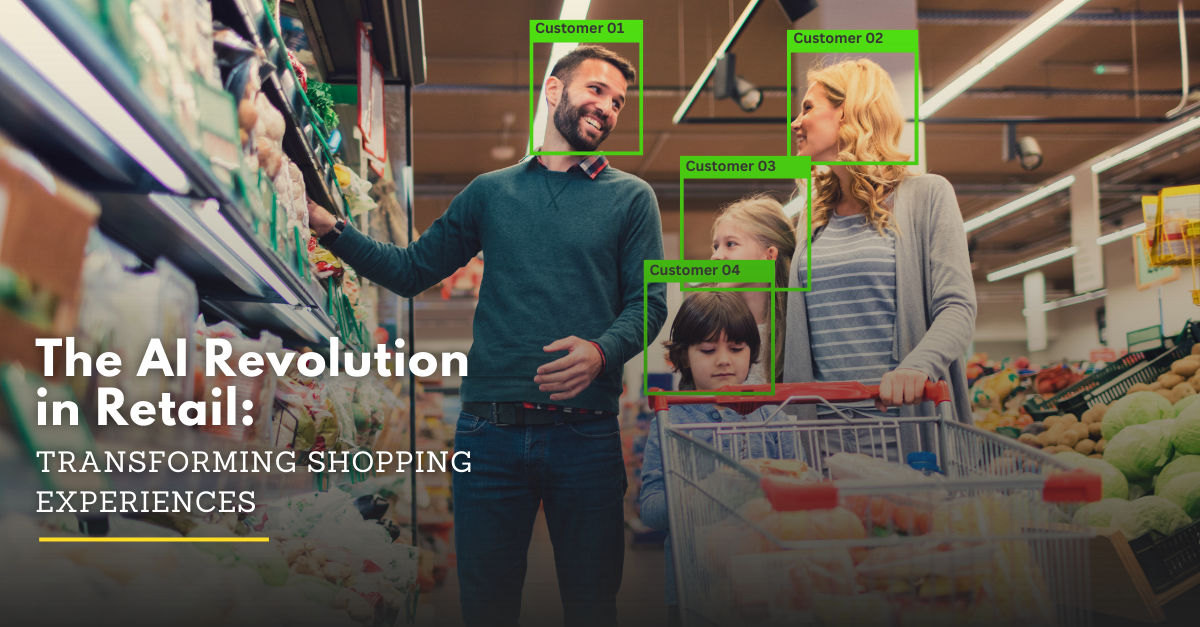Navigating the Challenges: AI Video Analytics Integration for Small QSR Businesses

Introduction
In the QSR industry, small businesses are realizing AI video analytics’ transformative potential. Yet, challenges like resource constraints, staff readiness, and privacy concerns hinder seamless integration. This article addresses these hurdles, providing practical tips for small QSRs while showcasing impactful AI video analytics use cases.
Understanding the Concerns of Small QSR Businesses
Limited Resources
Smaller QSR establishments often operate with tighter budgets and fewer resources, making the initial investment in AI video analytics seem daunting. Concerns about affordability and the perceived complexity of implementation can be significant barriers.
Staff Resistance and Training
Integrating new technologies may face resistance from existing staff who may be unfamiliar with AI video analytics. Additionally, the need for training raises concerns about downtime and productivity during the learning curve.
Practical Tips for Affordability and Implementation Efficiency
Start Small, Scale Gradually
To address limited resources, start with a phased approach. Begin by implementing AI video analytics in specific areas with high impact, such as order processing or customer service. This allows for a gradual investment and minimizes disruption.
Explore Cloud-Based Solutions
Consider cloud-based AI video analytics solutions, which often require lower upfront costs and reduce the burden of maintenance. Cloud platforms also facilitate scalability, enabling small QSR businesses to expand their use of video analytics as they grow.
Overcoming Staff Resistance and Ensuring Smooth Training
3.1 Employee Engagement and Communication
To alleviate staff concerns, involve them in the decision-making process. Communicate the benefits of AI video analytics, emphasizing how it can enhance their tasks rather than replace them. Transparency and open communication are key to gaining employee buy-in.
User-Friendly Interfaces and Training Materials
Choose AI video analytics solutions with intuitive interfaces and provide comprehensive training materials. This ensures that staff can quickly adapt to the new technology, minimizing downtime and optimizing the learning process.
Privacy Concerns and Data Security
Transparent Data Policies
Address concerns related to privacy and data security by implementing transparent data policies. Clearly communicate how AI video analytics will be used, assuring customers and staff that their privacy is a top priority.
Compliance with Regulations
Ensure that your chosen AI video analytics solution complies with local data protection regulations. This not only safeguards your business but also builds trust with customers who are increasingly conscious of data privacy.
Showcasing Impactful Use Cases of AI Video Analytics
Hygiene Detection
Implement AI video analytics to monitor hygiene standards in the kitchen and dining areas. Automated systems can detect cleanliness levels and trigger alerts for immediate action, ensuring a consistently safe environment for both staff and customers.
Customer Wait Time Exceeded
Utilize video analytics to monitor customer wait times. If the wait time exceeds a predefined threshold, the system can notify staff to take corrective action, preventing customer dissatisfaction and improving service efficiency.
Smoke and Fire Detection
Enhance safety measures by integrating AI video analytics for smoke and fire detection. The system can identify potential hazards in real-time, allowing for swift response and minimizing the risk of fire-related incidents.
Customer Tracking for Personalized Service
Implement AI video analytics to track customer movements within the QSR. This data can be utilized to personalize the customer experience, offering targeted promotions or optimizing staff allocation based on peak customer traffic times.








Conclusion
Small QSR businesses can boost operational efficiency and customer satisfaction by embracing AI video analytics. Use cases highlight its diverse applications, proving its value beyond traditional enhancements. With practical tips and addressing concerns, seamless integration becomes achievable.
FAQs: AI Video Analytics Integration for Small QSR Businesses
AI video analytics involves the use of artificial intelligence to analyze video data. For small QSR, this technology can enhance operational efficiency, improve customer service, and ensure a safer environment by providing insights from video footage.
Small QSRs often encounter challenges related to limited resources, staff resistance, training concerns, and privacy issues. These obstacles can make the integration of AI video analytics seem daunting.
Small QSRs can start small and scale gradually, focusing on specific high-impact areas. Additionally, exploring cloud-based solutions can reduce upfront costs and offer scalability as the business grows
Employee engagement and communication are crucial. Involving staff in decision-making, emphasizing the benefits of AI video analytics, and providing user-friendly interfaces with comprehensive training materials can mitigate resistance and streamline the learning process.
Implementing transparent data policies and ensuring compliance with local data protection regulations are essential. Communicating clearly with both customers and staff about how AI video analytics will be used can build trust and prioritize privacy.



